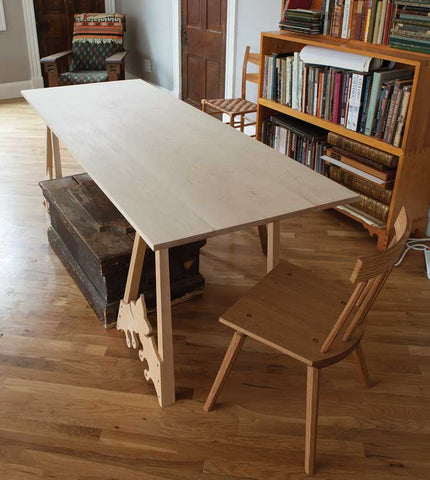Soap Finish for Wood
Jun 08 2018 0 Comments

Before you rush out and scour the shelves of your local super-market, you need to be aware that the soap you need for this task is a natural soap, not bars. A Danish soap finish uses natural soap flakes that are mixed with hot water. Soap flakes are a pure form of soap that doesn’t include additional detergents, fragrances or other modern chemicals. It is simply an oil that has been mixed with an alkali solution to create a salt of a fatty acid. Castile soap or Lux natural flakes are the proper ones to use.

You can even make your own “Castile soap" from the following recipe. Click here. But please follow the instructions carefully to avoid any accidents!!
Soap finish is used a great deal in Scandinavia; in Denmark in particular where the soap finish is considered to be desirable and sophisticated. The soap finish is why many Danish furniture pieces from the 1970’s look natural and unfinished. Soap is also used in Denmark to finish floors.
Soap finished furniture does require maintenance:
First, sand lightly with 220 or 320 grit sandpaper; just enough to make the surface feel smooth. (Never use steel wool, particularly on oak as it will react with the tannin and blacken it.)
Once this is done, apply another coat of soap (a mix of soap flakes and warm water) and wipe off the excess with a well wrung-out cloth. Sand again to remove the grain that will have been raised during the first application and repeat.
Soap finished floors require maintenance:
To maintain wooden (soap or oil finished) floors, wash them with a solution of soap flakes and water. The ratio of soap flakes to water is typically around 1 to 50, so it produces a wash rather than a finish. To achieve a slight whitening of the floor, without obscuring the wood grain, pipe clay can be added to the wash. Pipe clay also adds to the silky look and feel. After years and years of soap flake washing of floors, and the occasional adding of pipe clay, the result builds up to become a silky, smooth and superbly soft surface. As the finish, and the wash, is not particularly hard wearing you will need to wash your floor roughly once a week (depending on wear of course) and you immediately feel the silky softness return to the wood. In moderns days people can often not be bothered with the entire process and new wood floors are often treated with a white pigmented oil or varnish instead. However, the look, feel, and silky softness can only be achieved with the soap flake treatment and maintained with soap flake wash.
Here is a video showing the Castile soap making process:
Have a great weekend, stay warm and make something!!
Cheers
Gaston
0 comments

Leave a Comment